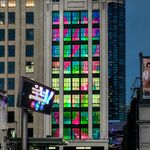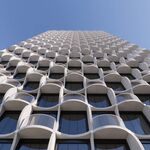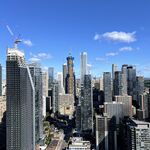W. K. Lis
Superstar
- Front door exiting
Able-bodied people who use the front doors of buses and streetcars to exit, when they are quit possible to use the center or rear doors.
Use the front doors only to enter as you pay or show your transfer to the driver. If able-bodied, use the center or rear doors to exit the vehicle. Maybe a bouncer should be stationed near the front door. - Nearside stop
If the bus or streetcar stop is located on the nearside of an intersection, and there are no traffic lights, the location is fine. However, there are problems with when there are traffic lights at the intersection. Passengers could enter the vehicle but then when they are ready to move on, a red light will delay the vehicle until the green light. To make matters worse, newly arrived passengers at the stop could delay the vehicle even further, having to board just as the traffic light turns green.
Traffic light intersections would be better off if they had far-side stop boarding, if possible. - Traffic light priority non-existent
Even with far-side boarding, a transit vehicle has to wait for a green light before proceeding past the intersection.
True traffic priority for transit vehicles should be implemented, especially in a transit friendly (lol!) city like Toronto. In addition, left-turn signals should be delayed until after the LRT signal allows the LRT to proceed first. - Pay as you enter
The pay as you enter payment procedure was implemented with the introduction of PCC streetcars. The passenger deposits their fare or shows their transfer as they pass the driver when they enter.
Prior to that, it was a pay as you pass payment procedure used on the Peter Witt streetcars. The passengers would board at the front door without paying. Instead, there was a conductor beside the center doors, who also sold tickets. Passengers would pay the fare or show the conductor their transfer. A valve or flap door at the front prevented passengers from exiting at the front door. Passengers would only exit at the center doors. When the Yonge streetcar was replaced with the subway, the Peter Witt’s were converted to pay as you enter.
Before the Peter Witt streetcar, there was a driver and a conductor. The conductor sold tickets and collected the fare.
The problem is that the pay as you enter system causes delays since there is only one door. The driver has to handle collection and driving.
In the near future a do-it-yourself system would allow passengers to board any door and use an on-board machine to collect or verify their fare. We will see if this helps, but I can see front door exiting remaining a problem. In the meantime, have your fare ready. Don't hunt for it after you get on. - Stopping at every stop
If the vehicle is full and no one has pulled the next stop request cord, and the vehicle is the pack leader, why stop?
There should be some indication on their computer console telling the driver their position in the pack. Their mirrors don’t help that much. - Not moving to the back
Again, don’t use the front door to exit. Move to the back. There are seats available in the back. More people can get on when you move to the back. - Illegal parking
It's rush hour, why do they still park? Are they more important than the 40 or 50 people they’re inconveniencing? Put cameras on the vehicles and get the driver the power to issue tickets. More Green P parking lots should help. - Snow banks
Snow banks push parking vehicles out into traffic. They park so far from the curb that they block streetcars. Don’t park if you end up blocking vehicles.
Charge them big time. Streetcars are rail vehicles; charge them for blocking the railway. Again, put cameras on the vehicles to record the st#{}d who block them and charge them big time.




